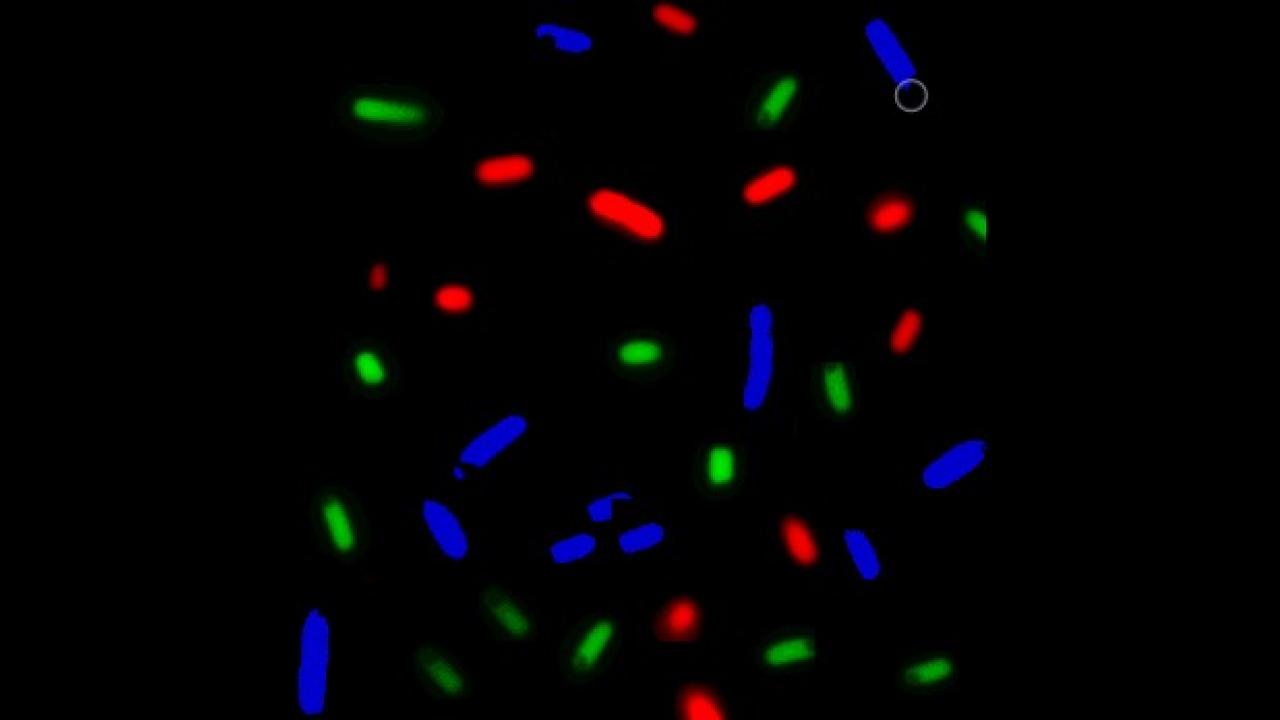
Bacterial consortia quickly produce pure protein synthesis machinery
A new technique developed in Cheemeng Tan’s biomedical engineering laboratory at UC Davis may have broken the barrier to rapid assembly of pure protein synthesis machinery outside of living cells.
In order to reconstitute cellular reactions outside of biological systems, scientists need to produce the proteins that simulate them. Rapid yet high purity reconstitution of the cellular reactions is critical for the high-throughput study of cellular pathways and cell-free diagnostic tests for various diseases. The reconstitution of cellular reactions, however, requires the separate expression and purification of each protein required to execute the reactions. The process is expensive and time consuming, making the production of more than several proteins at once, such as those required to study metabolic pathways and mRNA translation, extremely challenging.
In a paper published in Nature Chemical Biology, first author Fernando Villarreal and his colleagues in Cheemeng Tan’s lab in the Biomedical Engineering Department at UC Davis describe the production in a single procedure of all 34 proteins required to study mRNA translation.
Currently, proteins are extracted from whole cells (WCE) and used directly for in vitro translation. Proteins extracted by this method can contain cytoplasm and other elements of the original cell, and are undesirable for some applications. Another method (PURE) involves purifying each of the 34 proteins separately and blending them to approximate the mixture, or “machinery”, required to start the mRNA translation.
The Tan lab circumvented these limitations by synthetically engineering between 15 and 34 Escherichia coli strains to produce the required proteins of correct quantity within a single culture. By controlling transcription rates (via plasmid copy number), translation rates (via RBS sequence), and relative strain densities, the group found that they could induce the bacterial consortia to produce the right amount of pure translation machinery.
“I believe the work will open doors to fundamental improvement in the protein yield of pure cell-free transcription-translation systems and throughput of studying disease-relevant pathways outside of living cells” said Cheemeng Tan.
They also used the proteins produced by their method, called TraMOS, in a test that screens for the presence of peptides that inhibit a protease. Because proteases are commonly involved in the life cycle of parasites and cancer development, a test that could locate and identify many of the protease inhibitors all at once will be useful for drug development.
By reducing the time and cost associated with preparing multiprotein systems, the Tan lab’s approach enables high-throughput applications of TraMOS without having to invest in additional purification equipment. Unlike existing approaches, scientists can customize the expression and control of proteins using the TraMOS approach. Most labs that routinely perform protein purification already have the equipment to use the TraMOS approach, making it easy to implement, and democratizing access to the system. The microbial consortia-based approach may be generalized for the synthesis of other multi-protein systems, making it a potential game changer for high-throughput cell-free applications.
Paper published as:
Synthetic microbial consortia enable rapid assembly of pure translation machinery. Villarreal F, Contreras-Llano LE, Chavez M, Ding Y, Fan J, Pan T, Tan C. Nat Chem Biol. 2017 Nov 13. doi: 10.1038/nchembio.2514. https://www.nature.com/articles/nchembio.2514
